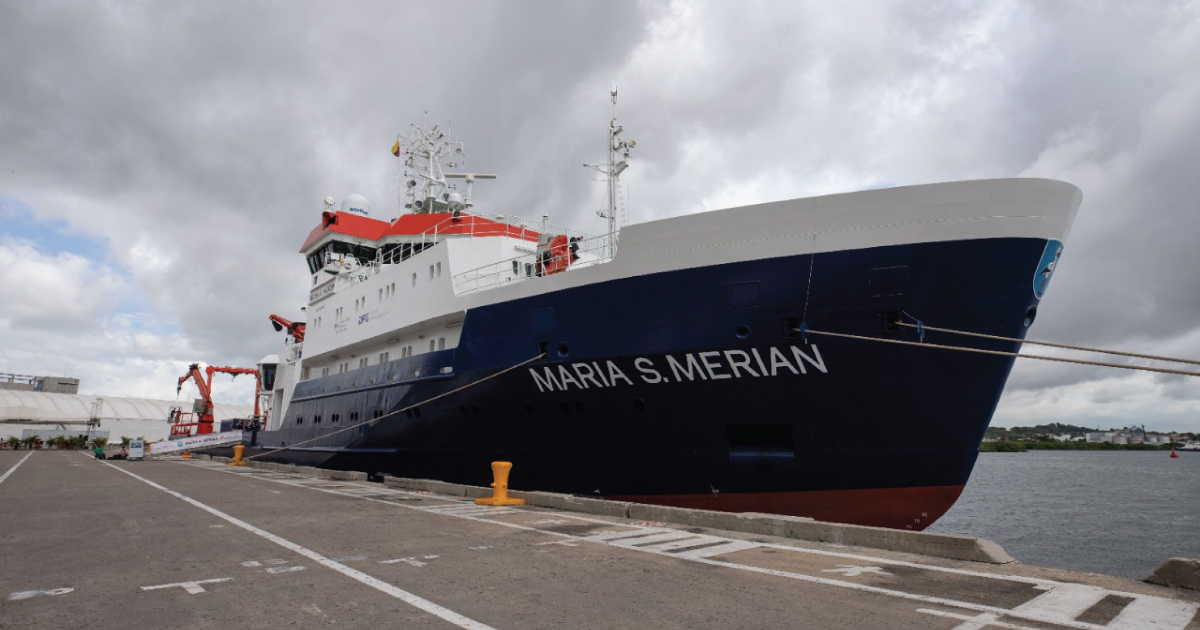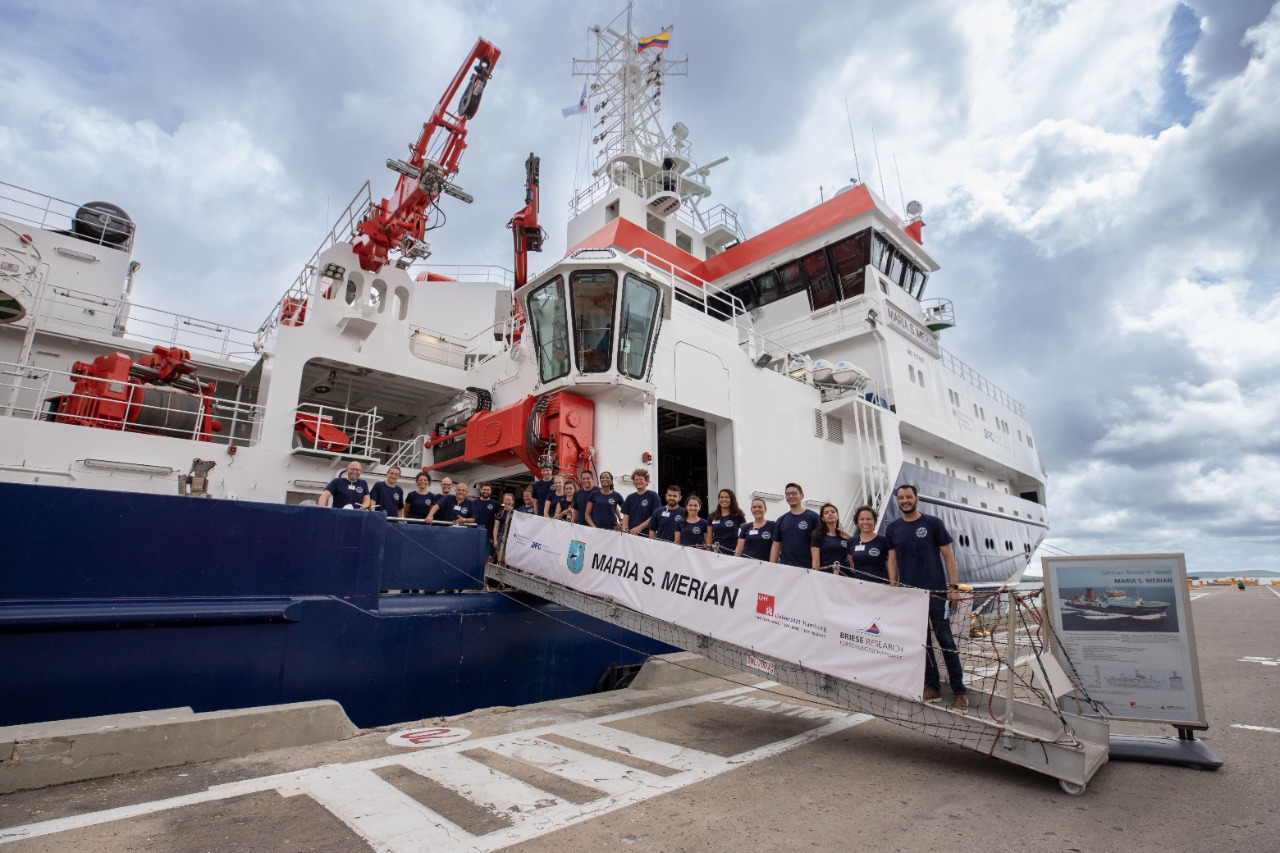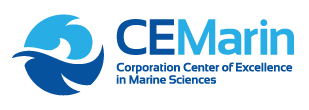
20 Oct Colombian-German expedition begins to explore the interaction between the Magdalena River and the Caribbean Sea
This week the expedition begins on the German research vessel Maria S Merian. Professors Gladys Bernal, Yuley Cardona, Ligia Urrego and Andrés Osorio from the National University of Colombia, and Mónica Zambrano and José Riascos from the University of Antioquia, all CEMarin Researchers, join the binational team that will explore the waters of the Rio Magdalena Region of Freshwater Influence (ROFI) and the sedimentology of the delta and marine fan system.
The Principal Investigator (PI) of the expedition, Christian Winter from Kiel University, describes the character of the project as follows: “We have discussed this project with our Colombian colleagues for a very long time, and it is fantastic to now be able to realize the dream of a joint expedition in Colombian waters. This expedition brings together a unique team: students and researchers from the Universidad del Norte (Barranquilla), Universidad Nacional de Colombia (Medellín), Universidad de Antioquia (Turbo), and the Center for Innovation and Technology of Ecopetrol S.A. in Colombia, and the Christian-Albrechts-Universität (Kiel) and the Leibniz-Institut für Ostseeforschung (Warnemünde) in Germany, will work and live together for 26 days on the ship. But it will take many more weeks, or even years, to work on the data and samples we obtain…”
The Magdalena River is the major tributary of the Caribbean Sea. At the river mouth, the waters mix and produce complex transport patterns of freshwater, sediments, nutrients and contaminants along the Caribbean coast, shelf and open sea that are of scientific interest. The first objective is to assess the extent, composition, and dynamics of the river sediment plume: in situ studies on the instantaneous dimensions, stability, extent, mixing conditions and structure of the river plume, as well as total suspended solids, pycnocline dynamics and turbulent processes will be carried out.


“We combine ship-based hydro-acoustic methods, direct sampling (sediment and water column) on specified transects, and sea floor observations with an autonomous sea floor observatory (lander) at selected stations. Thus several stations with different morphological, sedimentological and bio-logical characteristics will be explored,” explains Óscar Alvarez, professor at the Uninorte and Co-PI of the expedition.
The research will quantify modern sedimentary connections between the river mouth, the active delta and adjacent coastal zones, with a focus on human impact on sedimentological and morphological changes. Three delta canyons have been identified in preliminary data from the delta system, which will be mapped using a multibeam echo sounder and Parasound sub-bottom profiler. Positions for box cores and gravity cores across canyon and levee structures will be defined based on the hydroacoustic data. Sediment cores will be retrieved for ground-truthing the sub-bottom profiles and biogeochemical investigations.
Our CEMarin Researcher, Gladys Bernal, adds that: “we will also explore the hypothesis of a possible interaction between the RM ROFI and La Guajira upwelling system. We will take water and sediment samples on a transect to La Guajira, and analyze them in different laboratories in Germany and Colombia.”


